
1. What to do with the lawn?
21 February 2025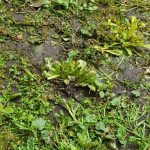
3. May – to mow or not to mow?
3 May 2025A lawn is usually, and meritoriously, judged on how few weeds it contains. Hundreds of lawn care companies’ websites provide examples of how they can produce and subsequently maintain a weed-free lawn that only contains lush grasses and nothing more. Such a lawn we are led to assume is the pinnacle demonstration of the ideal lawn and requires significant input to achieve. It is therefore worth paying for.
Big business.
This is understandable. Keeping Britain’s lawns lush, green, and weed-free is surprisingly big business. The UK lawn care products market size was valued by NMSC at around £1.9 billion in 2023, and is predicted to reach around £2.6 billion by 2030.
So long as lawn owners to go along with this promoted ideal and hold that the most admirable of lawns are only monocultures of lush weed-free grasses, then there will be companies to offer products and services to achieve and maintain it; especially since a well-manicured lawn takes some skill to attain and does not occur by itself.
But, what if the criteria for an admirable lawn were to change and evolve with the nature of the times we find ourselves inhabiting?
What if monoculture grass-only lawns became just one of the choices we could make for our lawns, rather than the current and to my mind unnecessarily limiting choice of either a weedy lawn or a manicured one?
If the 'weeds' are meant to be there, are planted there purposefully, encouraged, and mown accordingly, is it not also a managed and cared for lawn?
There is a lot more potential business here than is currently realised. Biodiversity-friendly business too!
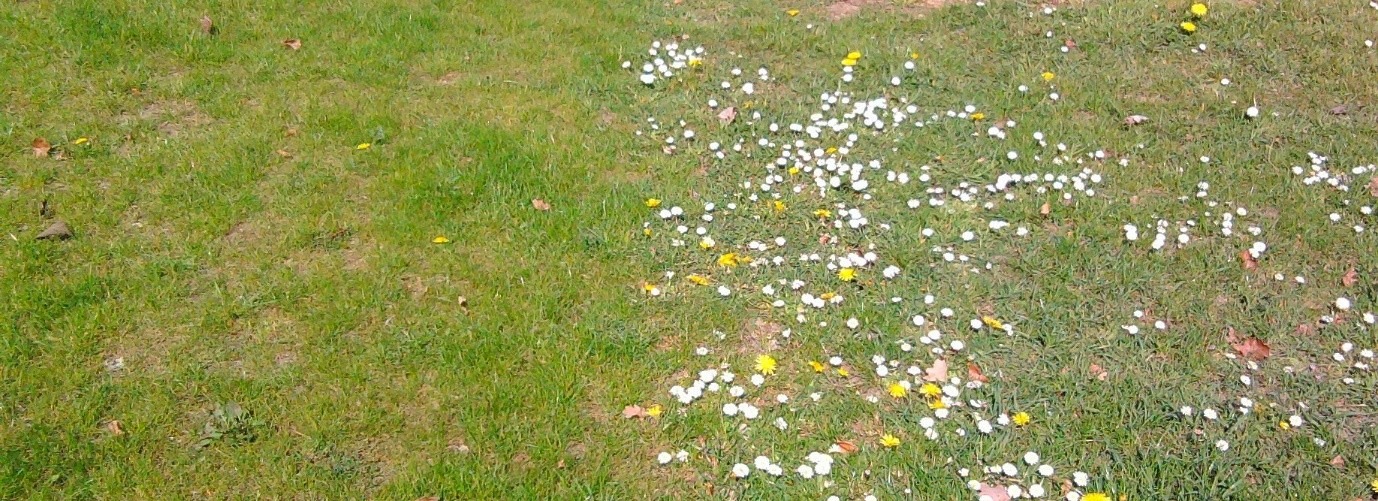
A monoculture lawn is not the only option. It never has been.
Hidden space.
Something notable about lawns generally is even in seed-raised or turf laid lawns that other plant species will eventually creep in over time. Keeping them out is a long-term project. This shows us something that has largely been overlooked or misinterpreted; there is space in lawns for other plants. We already all know this, every weedy lawn is evidence. There are plants that can not only survive the unusual rigours of lawn life, but they can grow, spread, produce flowers, and reproduce there; yet we almost seem conditioned to overlook this or view it poorly.
In my experience, most gardeners appear not to be especially bothered by a few daisies appearing in the lawn, but will often draw the line when dandelions appear. Britons can have a sometimes-perplexing relationship with their relatively small number of native plants.
At this moment in time the broad ‘native is good’ mantra is an often-encountered horticultural opinion, but only certain natives are good enough to be allowed to survive in our lawns and gardens it would seem. Despite the dandelion being a critical floral resource for pollinators, particularly in urban areas in the Spring, and its glorious sunburst flower, it’s seemingly easy and successful colonisation of otherwise tricky habitats makes it largely unwelcome in gardens and lawns.

Dandelions and daisies in the lawn. Note how the daisy flowers adaptively match the height of the lawn and the dandelions just surpass it.
Ask yourself why a dandelion in the lawn is a bad thing and we find ourselves back judging the lawn against the old manicured lawn standards from a previous century. This last century appraisal surely could do with moving on.
I am not advocating for neglected lawns. I am advocating for lawns that are obviously cared for and managed, but are freed from the current limiting dichotomy of either being manicured or weedy. Lawns in which plants other than grasses are encouraged and purposefully included.
Cultivating the lawn.
When we continue its maintenance and undertake to plant into a lawn or allow unexpected new plant arrivals to persist there, we are cultivating the lawn in the same way we cultivate the rest of our garden. We commonly call such activity ‘gardening’ and to my mind ‘lawn gardening’ is a valid term to use when we turn our attention to purposefully cultivating plants the lawn.
Planting perennials into grassy swards is not new and has acquired the terms ‘meadow planting’ or ‘enamelling’ to describe it. However, these planting styles are not specifically lawn planting but rather using relatively tall flowering perennials and grasses together for a particular effect. The meadows produced by this method are often stunningly beautiful but they are not lawns and tend not to be found in your average suburban garden where lawns are the norm.
Once we dispel the idealised monoculture lawn concept, we find ourselves freed from a surprisingly limiting restriction and are instead presented with a green canvas awaiting our horticultural creativity.
A green canvas.
Why not choose to have daises in the lawn rather than wait for them to turn up? Why not have some pink or red-flowered daisies to complement the common white. Why not put in a prostrate form of chamomile, as they do in the Buckingham Palace lawns? Why not have golden-leaved buttercups or blue lawn lobelia included? Once the creative juices start to flow, just as in other types of gardening, there can be a lot of pleasure to be found in planting for the lawn.
The type of plants suitable for lawns are only those that can withstand the primary management technique of mowing. Most garden plants do not take mowing well, and it therefore restricts the type of plants that can be successful in a lawn.
With this in mind, a common beginners’ error when choosing lawn plants is to first turn to plants currently grouped as alpines because they are often low growing.
Many alpines are indeed low-growing but are usually slow-growing too. This is not the most useful of combinations for a lawn and better suited to low groundcover type planting.
For example, a surprisingly common first thought for a lawn plant is sea-thrift (Armeria maritima). It is comparatively low growing and frequently to be found in the alpine section of plant nurseries and garden centres. However, it can take a thrift plant months to recover from mowing because it is slow growing, and since it will require being mown as often as the lawn, thrift is not usually a long-term lawn survivor.
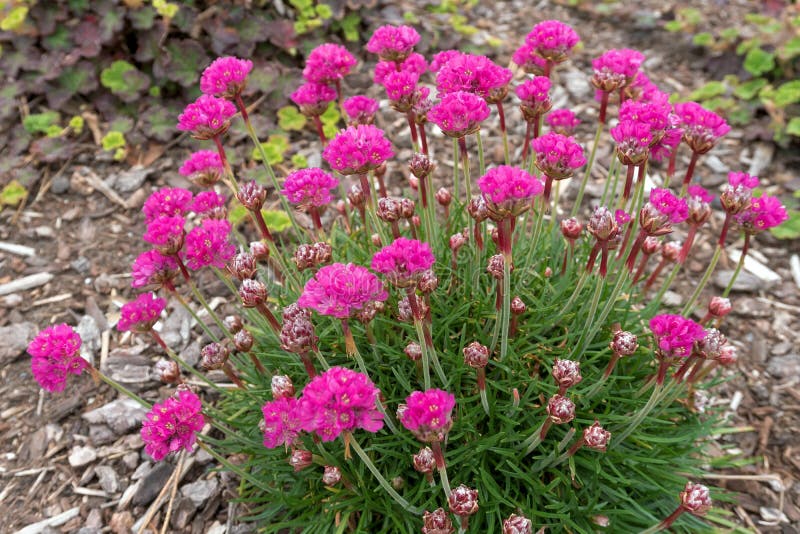
Sea thrift (Armeria maritima). Not a good choice.
Mowing during the growing season is a frequent activity in most grass-based lawns and lawn plants should be able to withstand it and bounce back from it. Prostrate and decumbent forms are useful, they can mostly avoid the mower’s blades, but quick annual growth is another especially useful feature and can also allow for some annual plants such as pansies to be used early or late in the season, although they tend to only last for one or two mowings.
Plasticity of form, the ability to change growth form in response to environmental influences such as mowing is another useful characteristic. The mower then acts much like a mass-pruning device, helping keep the plants stay in a lawn-useful form. The height and frequency of mowing will be directly influential here.

Yarrow (Achillea millefolium) plastically responds to mowing by keeping its head down. It also is the recorded food plant for 118 different insect species.
Plants.
There is no real reason to stick with only commercially cultivated plants for a cultivated lawn, although there are some delightful plants such as American lawn violets (Viola sororia) and lawn lobelia (Lobelia pedunculata) that are only obtained commercially.
A surprising number of native and naturalised plants can be found in unmanicured lawns, and the more species there are the more biodiverse the lawn will be. Biodiverse lawns being something to aim for.


A Spring lawn of American lawn violets (Viola sororia) with red dead-nettle (Lamium purpureum) and chickweed (Stellaria media). Source: bobbinsandbrambles.blogspot.com
From natives such as tiny parsley-piert (Alchemilla arvensis), common stork’s-bill (Erodium cicutarium), selfheal (Prunella vulgaris), bird’s-foot trefoil (Lotus corniculatus), mouse-ear hawkweed (Pilosella officinarum) and milkwort (Polygala vulgaris), to naturalised fox & cubs (Pilosella aurantiaca) and creeping wood sorrel (Oxalis corniculata) there are a surprising number of plants that can adapt to lawn life, especially if they suit the local soil, overall environmental conditions, and applied mowing frequency.

Naturalised creeping wood sorrel in a shady part if the lawn where grasses do not thrive. Why not?

A mix of species in this lawn that have mostly displaced the grasses, with foliage-scented and yellow-flowered lady’s bedstraw (Galium verum) growing prostrate in response to the mower.

Common stork’s-bill in the lawn along with yellow-flowered lesser trefoil (Trifolium dubium).

A roadside verge lawn of Bird’s-foot trefoil, Cat’s-ear and Ox-eye daisy (Leucanthemum vulgare) outside a well-known supermarket. That such spaces are not already purposefully full of lawn tolerant plants seems a missed opportunity.

Cat’s-ear (Hypochearis radicata) and white clover (Trifolium repens) in the lawn.

Cat’s-ear growing in an urban road verge. A few more species, maybe some clovers, and this verge would have much more biodiversity value than plain grass.

A species-mixed grassy lawn in flower. This is not weedy or neglect, this is intentional.
Expect the unexpected.
I have encountered grass-sparce lawns with plants you might not expect, such as seaside daisy (Erigeron glaucus) and snow-in-summer (Cerastium tomentosum) mixed in with English stonecrop (Sedum anglicum), sea milkwort (Lysimachia maritima) and sea plantain (Plantago maritima) in infrequently mown, sunny, dry, and sandy lawns. Such a lawn can look a bit battered after a mowing event, but it persists, adapts, and appears to thrive if the number of flowers produced is anything to go by. A lawn simply does not have to be just grass.

Seaside daisy and snow-in-summer in the lawn.

Sea milkwort in the lawn frequently attracts bumble bees and other pollinators.
So why on Earth are we not filling our lawns with flowering plants?

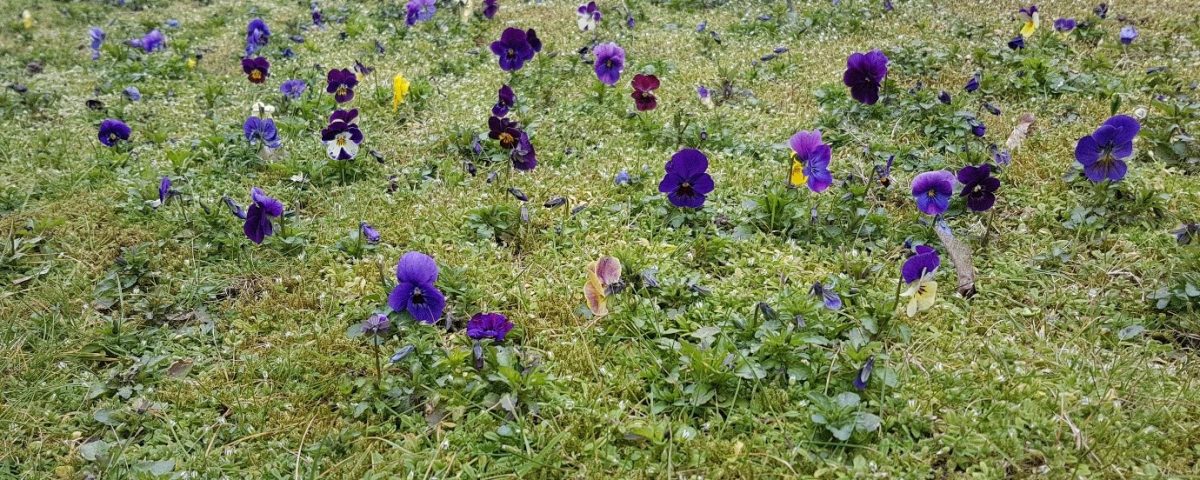
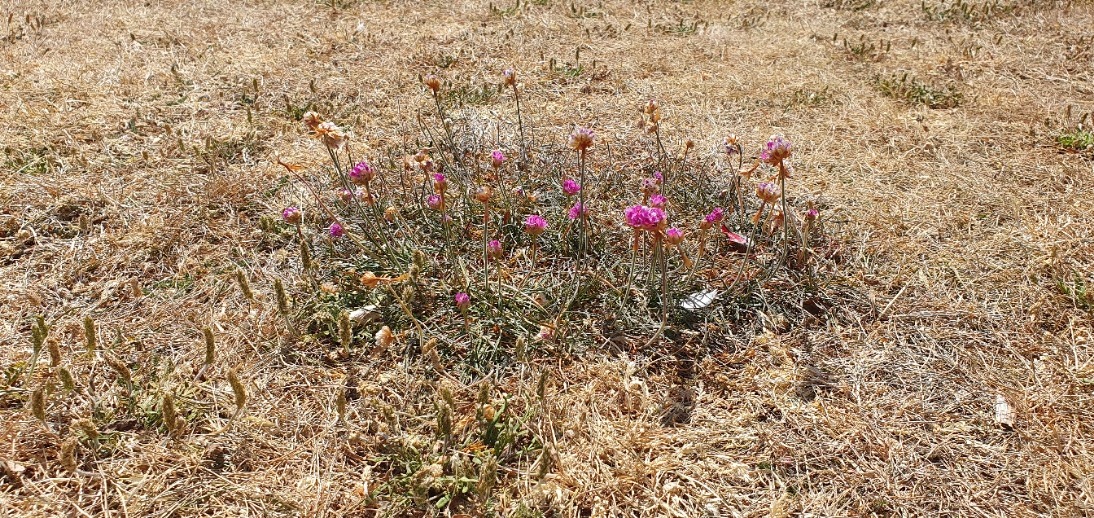




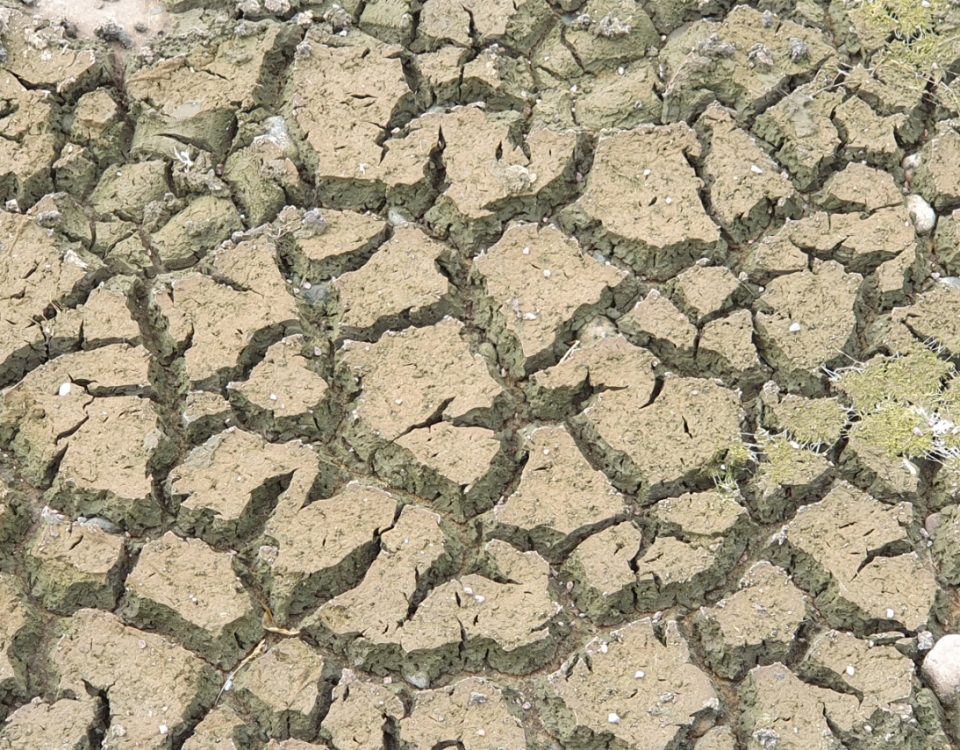
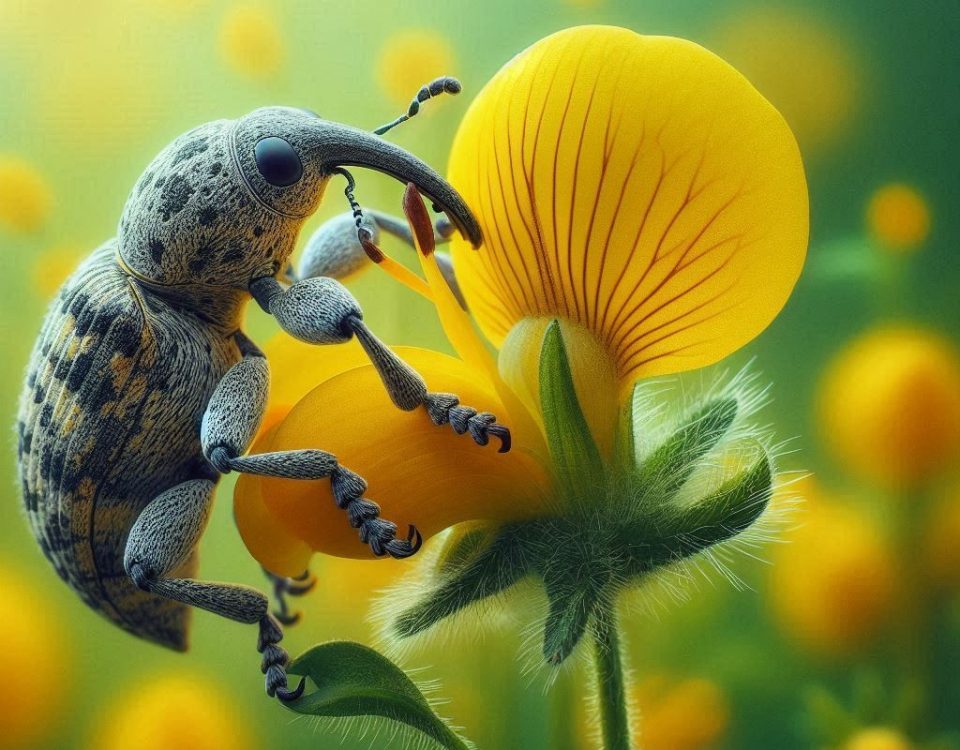

1 Comment
Great blog post Lionel. Very informative. I fully intend to get rid of my small grassed areas and replace with flowering plants that tolerate mowing every now and again. Grass lawns are so boring and lifeless!